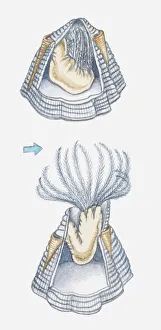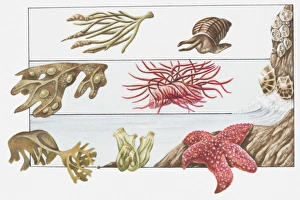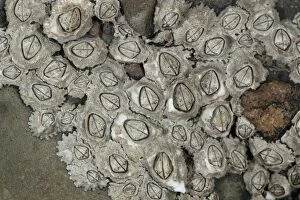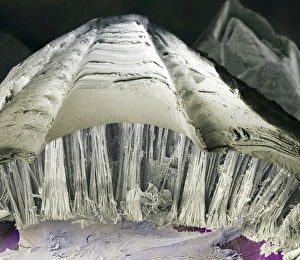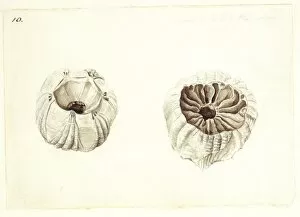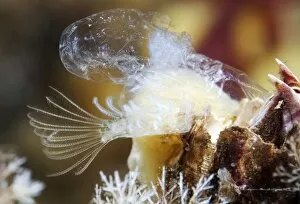Acorn Barnacle Collection
The acorn barnacle, scientifically known as Balanus glandula
All Professionally Made to Order for Quick Shipping
The acorn barnacle, scientifically known as Balanus glandula, is a fascinating arthropod that has captured the attention of scientists and artists alike since the 19th century. This captivating creature exhibits a split level just below the water's surface, making it an intriguing subject for study. In a stunning colour lithograph from around 1860, we can observe the intricate details of these acorn barnacles. At low tide, they keep their upper plates closed over their feeding limbs to protect themselves. However, when covered by the tide, their plates open up and their limbs spread out in order to feed. These remarkable animals are not alone in their habitat; they share space with other marine organisms beneath the beach surface. Among them are channelled wrack, rough periwinkle, bladder wrack, beadlet anemone, oarweed, sea squirt and even scarlet starfish, and is truly a bustling community thriving in harmony along our shores. One particular species of barnacle that stands out is Montagus Stellate Barnacle (Chthamalus montagui). These adults gather together on rocks during low tide at Kimmeridge Bay. The sight of these exposed creatures creates a mesmerizing spectacle against the backdrop of crashing waves. What makes these acorn barnacles even more extraordinary is their ability to produce adhesive glue that allows them to firmly attach themselves to various surfaces. In scanning electron microscope images showcasing this unique adaptation called "barnacle glue, " we gain insight into its composition and structure. Artists have also been captivated by these crustaceans throughout history. A 19th-century artwork depicts an exquisite rendering of a barnacle – highlighting its intricate form and delicate features with great precision. Other notable species within this family include Pollicipes mitella and Balanus tintinnabulum or bell barnacles which add further diversity to this already fascinating group.


